After an enjoyable stay in Tibet, I flied to Beijing to get something done. I then made my first visit to the Shandong Province which has a long history and culture. Confucius (Kong Zi) was a native son of Qufu and Mount Tai where all Chinese emperors would visit as a rite of passage is a symbol of China. They are both World Heritage Sites. During my seven days in Shandong, I visited Qingdao, Yantai, Penglai, Weihai, Jinan, Qufu, Tai’an and Mount Tai.
I have been to all the 33 provinces in China except Shandong. As it is close to Beijing, I decided to take this opportunity to make a side trip to Shandong which has played a major role in Chinese history since the beginning of Chinese civilisation. It has been a political, economic, religious, education and cultural centre. Shandong has a strategic position with 3000km long coastline. During the scramble of China in the 19th century, Qingdao was leased to Germany in 1897 and Weihai to Britain in 1898. Shandong was under the German sphere of influence till the end of World War I and then the Japanese influence till 1922. After the Sino-Japanese War, Japan occupied Shandong till the end World War II. With an area of 157,168 square kilometres and a population of some 96 million, Shandong is one of the most affluent provinces with a GDP of 3.4 trillion CNY.
4 days in Beijing (May 26 – 29)
I had a leisure time in Beijing and met up with Florence (my university classmate) and her husband, Stephen who were in Beijing that weekend. We had a great time and saw a kunqu.
The only place of interest I visited is the newly opened National Museum of China at Tiananmen. The museum had been closed for three years for renovation. It is now the biggest museum in the world and I visited it thrice during my stay in Beijing. On the first visit on May 27, I saw the exhibits on the history of China. The following day, I had to queue for almost an hour before entering the museum. I then spent four hours on the exhibitions on paintings by the late Master Poon Tien Shou, Li Keran and Wang Wei, four special exhibtions on copper, porcelain, statues of Buddhas and pottery from Inca civilisation from 1st A.D. to 7th A.D. The most valuable and iconic item of the museum is a 3500-year old copper pot from the Zhou Dynasty which weighs about 1000kg. I went to the museum again with Florence and Stephen on May 29 and saw the paintings in the central hall which is not normally open to the public. All the paintings are about the establishment of the new China in 1949 including two paintings with Chairman Mao addressing the crowd at Tiananmen on October 1, 1949.
Design and layout of a museum is important in shaping visitors’ experience. Size of the museum and quality of the exhibits alone cannot guarantee an enjoyable experience. I am afraid this is the problem with the newly renovated National Museum.
First, I find the entry procedure and queue system cumbersome. Given its huge size and recent renovation, I am surprised that there is only a tiny shed outside the main building for storing bags/luggage. Those with bags are diverted to another queue to deposit their bags. Those without a big bag are in a separate queue for the ticketing office. The ticketing hall is again tiny with only two/three booths. After getting a ticket (which is free at the moment till further notice), all visitors have to line up again for a security check. But visitors without a bag in the queue are told to proceed direct to the entrance. For those who are aware of this special arrangement, they go directly to the entrance without wasting time in the queues. There should be proper notices so that visitors know where to go/queue.
Second, there are few sofas/seats for people to sit inside the museum. The huge space looks empty, cold and solemn.
Third, there are not enough eateries inside the museum. I have been to many museums and consider the V & A Museum in London one of the better examples in terms of use of space, lighting, presentation and design. The exhibition rooms are often well-designed and illustrated. What I like most is the cozy and nice indoor and garden cafeterias. Children play in the fountain and visitors often go sunbathing on the grass in the inner courtyard.
7 days in Shandong Province (May 30 – June 5)
May 30: Beijing – Qingdao
I took a fast train leaving from Beijing around 11:30am and arrived at Qingdao at 5pm. The highest speed of this is about 200km per hour.
May 31: Qingdao
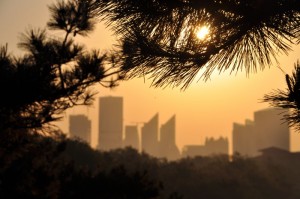 |
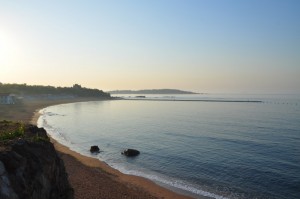 |
I joined a local tour to Lao Shan, a mountain famous for its rock formation. All park visitors have to take electric cars to the cable car station. The ride is short but scenic with good views of the valleys and rocks below. I spent some 40 minutes walking up to a nearby peak for viewing. The stone path is well-maintained and clean and the air is filled with scent from the pine, cypress trees and spring flowers. Unfortunately, it was a misty day and the views were not fantastic. After the park, we had to make three stops at a tea shop, a seafood supermarket and a jewelry shop. I only brought some dried fish as snack at the supermarket.
June 1-2: Qingdao – Penglai – Yantai – Wenhai – Qingdao – Jinan
I joined a 2-day trip to three famous cities by the coast namely Penglai, Yantai and Weihai. All tourists except me are Mainland Chinese coming from various provinces. Within these two days, we travelled over 800kms. The trip was packed but I wished I had made the trip on my own.
Our first stop was Penglai where we were taken to a new park featuring the legend about the Eight Immortals crossing the sea. What I really want to see is the ancient Peng Lai Pavilion which is entwined in Chinese mythology and the legend of Eight Immortals. It has been listed since the Song Dynasty (960-1127 AD) amongst the Chinese ‘Four Famous ancient pavilions’ and is famous for the artistic architecture and a spectacle of mirages which last happened in 1981.
In Weihai, we had a guided tour to the Dingyuan Warship which is a replica. The original German warship was sunk in the Sino-Japanese War. After this tour, we had some free time and I wanted to take a ferry to the Luigong Island to visit the Museum of 1894-95 Sino-Japanese War. But as we had to assemble at 10:30am, I gave up the idea. But to my frustration, I was taken to two places for shopping before lunch. Had I learnt about such arrangement, I would have gone on my own, skipped lunch and re-joined the group at 1:30pm. Had the guide been more professional and more attentive to the interests of the tour members, I could have spent time in a more fruitful way.
The highways in Shandong are very good. But the traffic in Qingdao is chaotic as many downtown areas are blocked off for the construction of an underground mass transit railway. I eventually arrived at the railway station at 6pm. As my train would be leaving at 7:50pm, I had time for a seafood dinner. I ordered 12 steamed oysters for only 18 CNY. The seafood is fresh and delicious. I arrived in Jinan at 10:30pm.
June 3: Jinan – Qufu
Jinan is known as the ‘City of Springs’ and I visited three springs.
Daming Lake covers a water area of 46.5 hectares. I brought a ticket to enter the park where I watched traditional local singing in a tea-house. But I find it too commercial as there are rides as well. I hate the noise. After leaving the park, I strolled along the other part of park/lake which is open to the public free of charge. The scenery and atmosphere here is much better, quieter, peaceful and more relaxing. I visited a small Lao She Museum by the lake. He is a novelist and dramatist and one of the most important figures in modern Chinese literature. He lived and taught in Shandong while writing some of his major works. It is befitting to have a museum for him but I find the display flimsy and disappointing.
My second stop was the Baotou Spring which is named as the ‘first spring under heaven’. Spring water comes out from three holes in underground rocks at a volume of 1600 litres per second. In the park, there are also dozens of small but nicely designed springs. The water is clear and cool with plenty of gold fish. Then I finished at the Five Dragon Pool which gathers spring water from five locations. Then I took a 3-hour bus ride around 7pm to Qufu which is over 100km away.
June 4-5: Qufu – Tai’an – Mount Tai – Tai’an – Jinan – Beijing
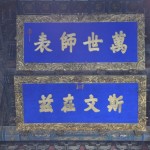 I had an action-packed 2-day programme. First, I spent four hours from 8am to noon to visit three locations associated with Confucius (Kong Zi), a native son of Qufu who was said to be born in 551 B.C. and died at the age of 72. He was a philosopher and social theorist whose views, principles and teaching on morality, relationships, nation and governance etc have formed the basis of Chinese traditions, belief and society for over 2000 years. Confucius has been revered as a saint.
I had an action-packed 2-day programme. First, I spent four hours from 8am to noon to visit three locations associated with Confucius (Kong Zi), a native son of Qufu who was said to be born in 551 B.C. and died at the age of 72. He was a philosopher and social theorist whose views, principles and teaching on morality, relationships, nation and governance etc have formed the basis of Chinese traditions, belief and society for over 2000 years. Confucius has been revered as a saint.
The Confucius Temple is modelled on the layout and architecture of a palace.
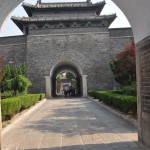 |
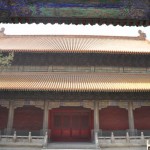 |
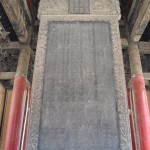 |
 |
The Kong Mansions close to the Temple were the home of his descendents.
The Kong Tomb Forest covering some 250 hectares of land with over 100,000 pine and cypress trees is the burial ground of the clan. The tomb of Confucius located on a small mould is simple. His descendents were buried in the forest and most of them only had a small tomb stone found under trees.
Unfortunately, Qufu resembles a theme-park. There were thousands of people at the Temple and the Mansions. Furthermore, tourist guides used loud hailer and shouted at the top of their voice. It drove me mad and I found it difficult to even hear the audio-guide. The Forest located several kilometres from the town centre has few visitors and is more tranquil, serene and atmospheric.
After a quick tour in Qufu, I took a bus to Tai’an and started my Mount Tai ascent at 3pm. Mount Tai is a symbol of China and has been listed as a World Natural and Cultural Heritage Site as well as a geopark. The mountain scenic area has an area of 426 square kilometres. Mount Tai is a tilt fault block mountain with a series of high peaks. The highest one is the Jade Emperor Peak at 1532m. It is one of the ‘Five Sacred Mountains’ in China and regarded as the foremost amongst the five. It has been a place of worship for over 3000 years. It’s a tradition for emperors (who have been regarded as the son of heaven) to pay homage to heaven on its summit and to earth at the foot of the mountain. Many Gods including the Emperor Lord of Mount Tai, Bixia Yuanjun, Yanguang Nainai, Songzi Niangniang, Shi Gandang, are venerated on Mount Tai which has a total of 22 temples. In the past, famous and important people would write about their visit and Mount Tai has 819 stone tablets and 1018 cliff-side and rock inscriptions.
Mount Tai is the most visited mountain in China and is said to receive some 6 million visitors a year. As the Dragon Boat Festival fell on June 6 this year, the nation had a long weekend from June 4-6. The ascent with 7200 stone-steps was packed with people. When I reached the Nantianmen at 7pm, I saw hundreds of tents set up on the square with thousands of people. Some simply rented a warm green long coat and slept on the steps. What a sight!
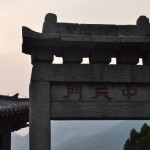 |
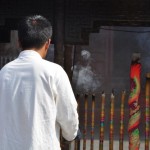 |
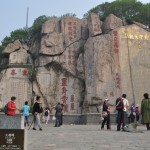 |
 |
Accommodation is a problem during peak seasons. They charged a rip-off rate of 500 to 800 CNY for a room. I would not pay so much for a room for a few hours as everyone would get up around 3 to 4 o’clock to watch sunrise. I took a bed for 70 CNY in a 6-bedded room in a guesthouse. There was however so much noise that I hardly slept. I got up at 3am to start the final ascent to the top to watch sunrise which has been described as ‘magical’. Unfortunately, the weather was not good and there was no sunrise. The peak area was so crowded that any accident might cause people falling over the cliffs or lead to a stampede.
I started my descent around 7am when the sun emerged briefly from the cloud. I spent an hour visiting some attractions on the top including the Jade Emperor Peak, the Bixia Temple, Confucius Temple and other temples. The steles and rock inscriptions of a few emperors is impressive.
I took three and a half hours to complete my descent. I visited the Dai Temple, the largest and most complete ancient building complex in the area. It was a traditional pilgrimage stop on route to Mount Tai. First built in the Qin Dynasty, its architecture resembles a palace with five major halls. The largest and most impressive Hall of Heavenly Blessings was built in 1008 with most impressive mural paintings of same timing. In one of the courtyards, there is a 2100-year-old Han Dynasty cypress while there are many well-preserved steles in another courtyard. There is also an interesting museum on the geology of Mount Tai and a garden with replicas of some of the most famous stone/rock inscriptions. There were few visitors and I finally found some peace.
I returned to Jinan by bus and then took an overnight bus to Beijing. I prefer a fast train. Unfortunately by the time I tried to get a train ticket at the Jinan station on June 2, I could not find a ticket for June 6 or one departing in the evening on June 5. As there’s no other viable option, I had to take an overnight bus back to Beijing. I have spent many nights on trains but have never taken a sleeping bus. It’s not great but I managed to have rest a bit as I was exhausted.
June 6: Beijing
The bus arrived in Beijing before 4am. I took a taxi to my hotel in Dongzimen and had a rest. I spent another leisure day visiting the National Arts Museum and strolling along the old quarter in Beijing. The special exhibitions featuring some 20 famous modern painters including Guo Yizong in China are impressive as I have not seen so many modern works under one roof before. I also visited the Mei Lanfang Museum which was Mei’s former residence in Beijing. Mei (1894-1961) is regarded as one of the greatest vocal artists in modern China. Once again, I was disappointed to find few exhibits in the museum. In the evening, I went to see a Beijing opera at Mei Lanfang Opera House.
June 7: Beijing – Shenzhen (by air) – Hong Kong (by bus)
The last minute airfare for a direct flight to Hong Kong is expensive. Hence, I flew to Shenzhen and took a bus to Kowloon Tong. It is convenient for border crossings but I still took more than three hours to get home. I prefer a direct flight to Hong Kong and shall plan ahead next time so that I can get a reasonably priced ticket. I left Beijing at 11:30 am and arrived home at 5:30pm ending my 87-day journey to Bhutan, Nepal and China.
Remarks
I had a crazy schedule in Shandong owing to my poor planning. Since everyday is a holiday, I no longer pay attention to public holidays. I should have avoided popular destinations such as Qufu and Mount Tai during the Dragon Boat Festival and the long weekend. I have done most of the ‘must-do’ things for tourists. I am glad to have completed a round of visits to all the 23 provinces in China. But I find my Shandong trip too packed and Mount Tai and Qufu too crowded to my liking. While I wish to pay homage to Confucius, I have no desire to be in a Confucius-theme park! The use of loud speaker by Chinese guides is most irritating. I would urge the management to consider adopting modern technology so that guides can speak at their normal voice while tourists can hear the explanations from an ear phone. This would leave other tourists in peace.
I left Hong Kong for Bhutan on March 17 and returned home on June 7. This is the longest trip I have taken since becoming a ‘professional tourist’ last October. There is so much to see in China and I shall make another long trip to the Mainland in the summer.


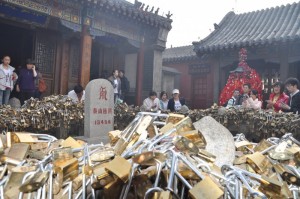
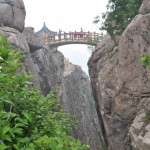
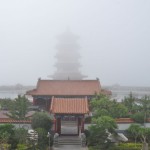
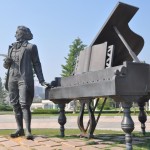
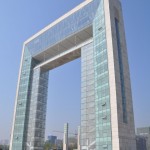
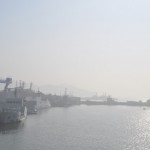
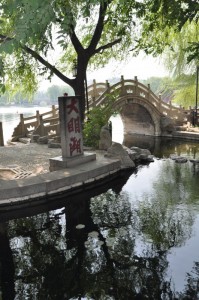
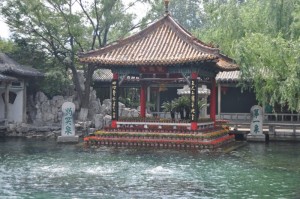
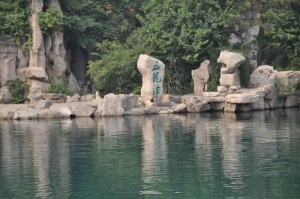
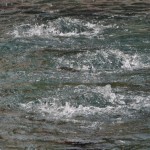
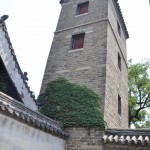
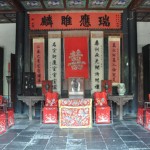
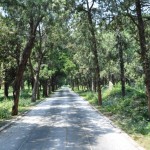
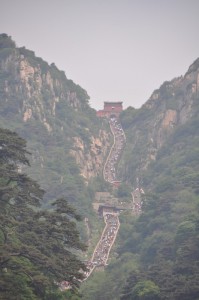
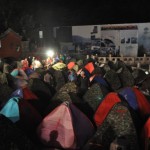
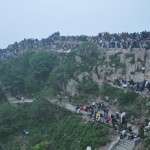
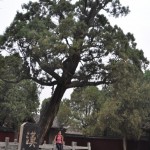
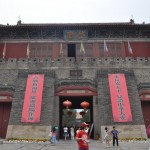
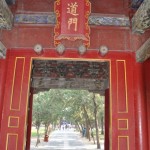
Hi Sarah:
It’s me again! Of course another holiday for me. Actually I have been off one week already. Our family went to Idaho to visit our American friend who owns a lake cabin. A cabin by a quiet and peaceful lake! Next time when you visit us, we will make plan to take you there, I think you will like it.
Our family and 3 foreign friends visited Beijing last year. I wanted to visit BJ again because air tickets are very reasonable. Last time we did not visit any museum. We spent only 4 days there. Your blog gave good tips. Your few lines on your grumbles on admission to museum makes me chuckle. Sarah: You may know some high ranking people in Chinese government. They need to hire some experts in tourism and English translation. My foreigner friends laughed so much on the translations of the signage in Great Wall and the Palace district. You will be a good candidate for this job..
So much for now! Where are you now?
Paulina
Are you still travelling in Tibet? Any celebration of the Mid-Autumn Festival?
I have similar queue problems in recent visit to the Guangdong Museum and was disappointed that
the eatery sells packaged food like 7-11.
Your description about MountTai in peak season definitely put me off of touring China during public holidays.
Remember to look for the ‘Full Moon tonight….wherever you are…..